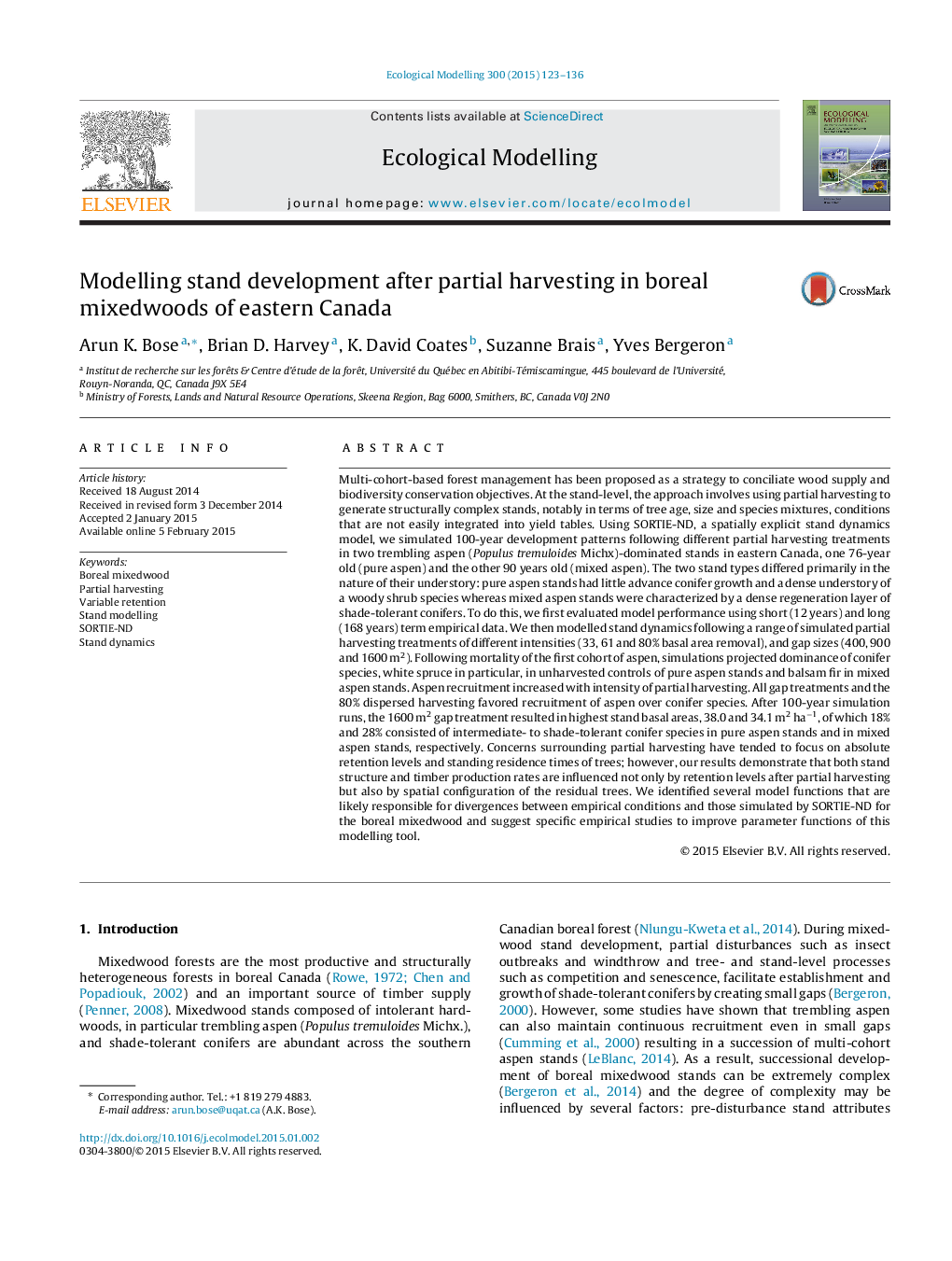| کد مقاله | کد نشریه | سال انتشار | مقاله انگلیسی | نسخه تمام متن |
|---|---|---|---|---|
| 6296658 | 1617446 | 2015 | 14 صفحه PDF | دانلود رایگان |
عنوان انگلیسی مقاله ISI
Modelling stand development after partial harvesting in boreal mixedwoods of eastern Canada
ترجمه فارسی عنوان
پس از جمع آوری جزئی در مخلوطی از دو جزیره شرقی کانادایی، توسعه پایدار مدل سازی می شود
دانلود مقاله + سفارش ترجمه
دانلود مقاله ISI انگلیسی
رایگان برای ایرانیان
کلمات کلیدی
موضوعات مرتبط
علوم زیستی و بیوفناوری
علوم کشاورزی و بیولوژیک
بوم شناسی، تکامل، رفتار و سامانه شناسی
چکیده انگلیسی
Multi-cohort-based forest management has been proposed as a strategy to conciliate wood supply and biodiversity conservation objectives. At the stand-level, the approach involves using partial harvesting to generate structurally complex stands, notably in terms of tree age, size and species mixtures, conditions that are not easily integrated into yield tables. Using SORTIE-ND, a spatially explicit stand dynamics model, we simulated 100-year development patterns following different partial harvesting treatments in two trembling aspen (Populus tremuloides Michx)-dominated stands in eastern Canada, one 76-year old (pure aspen) and the other 90 years old (mixed aspen). The two stand types differed primarily in the nature of their understory: pure aspen stands had little advance conifer growth and a dense understory of a woody shrub species whereas mixed aspen stands were characterized by a dense regeneration layer of shade-tolerant conifers. To do this, we first evaluated model performance using short (12 years) and long (168 years) term empirical data. We then modelled stand dynamics following a range of simulated partial harvesting treatments of different intensities (33, 61 and 80% basal area removal), and gap sizes (400, 900 and 1600Â m2). Following mortality of the first cohort of aspen, simulations projected dominance of conifer species, white spruce in particular, in unharvested controls of pure aspen stands and balsam fir in mixed aspen stands. Aspen recruitment increased with intensity of partial harvesting. All gap treatments and the 80% dispersed harvesting favored recruitment of aspen over conifer species. After 100-year simulation runs, the 1600Â m2 gap treatment resulted in highest stand basal areas, 38.0 and 34.1Â m2Â haâ1, of which 18% and 28% consisted of intermediate- to shade-tolerant conifer species in pure aspen stands and in mixed aspen stands, respectively. Concerns surrounding partial harvesting have tended to focus on absolute retention levels and standing residence times of trees; however, our results demonstrate that both stand structure and timber production rates are influenced not only by retention levels after partial harvesting but also by spatial configuration of the residual trees. We identified several model functions that are likely responsible for divergences between empirical conditions and those simulated by SORTIE-ND for the boreal mixedwood and suggest specific empirical studies to improve parameter functions of this modelling tool.
ناشر
Database: Elsevier - ScienceDirect (ساینس دایرکت)
Journal: Ecological Modelling - Volume 300, 24 March 2015, Pages 123-136
Journal: Ecological Modelling - Volume 300, 24 March 2015, Pages 123-136
نویسندگان
Arun K. Bose, Brian D. Harvey, K. David Coates, Suzanne Brais, Yves Bergeron,
